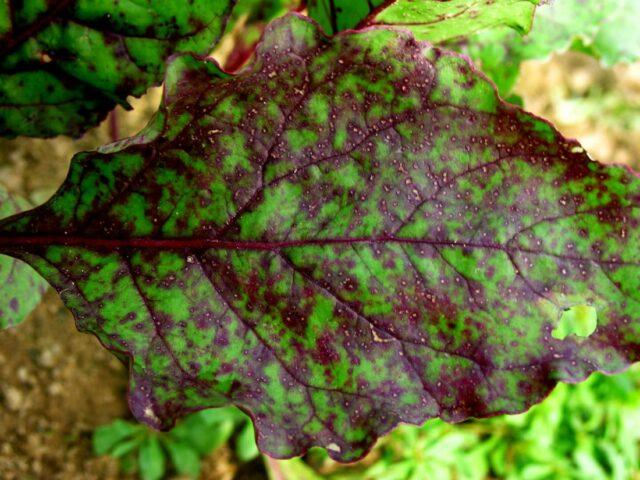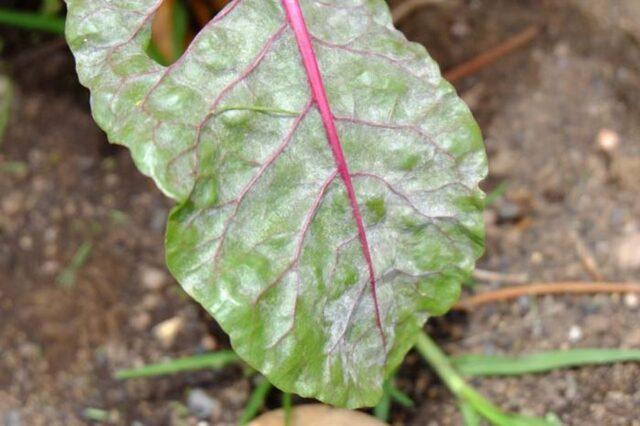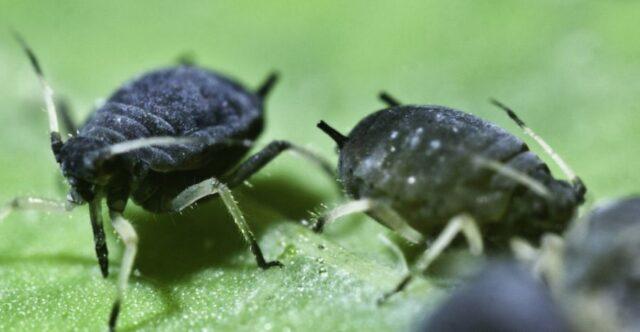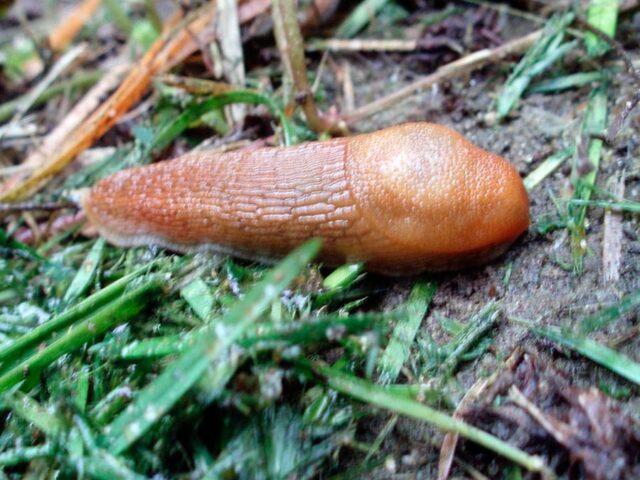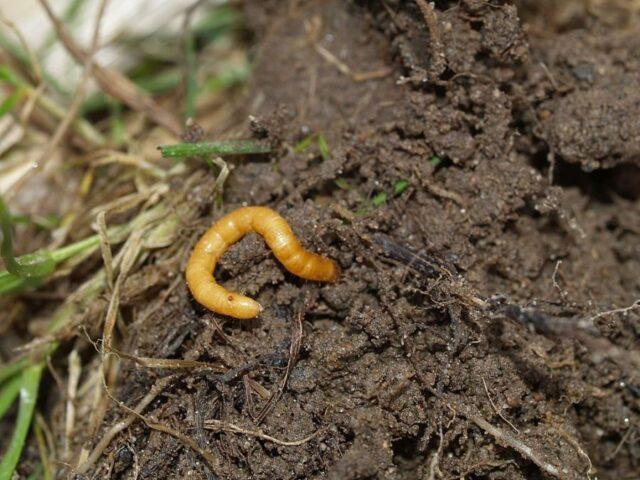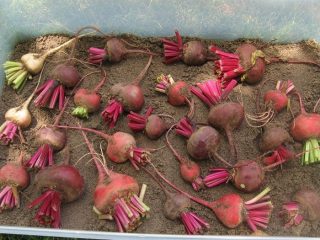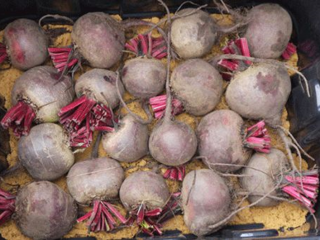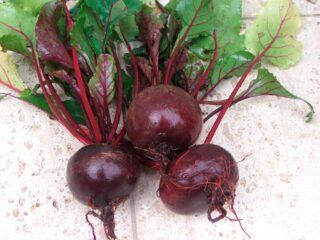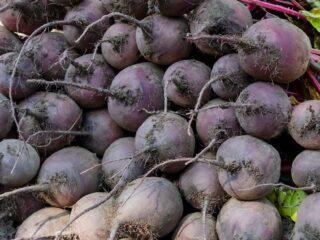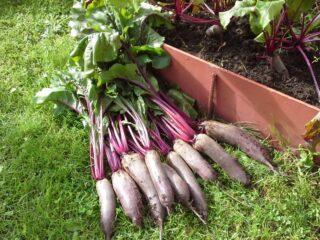Content
Growing chard requires careful attention from the gardener, but is not particularly difficult. Leaf beet demonstrates unpretentiousness to external conditions and mainly requires regular watering.
What kind of plant is this
Chard, or leaf beet (Mangold), is a herbaceous biennial of the Amaranthaceae family, which is closely related to common, fodder and sugar beets. It has a cylindrical root and white or reddish pulp with a hard structure and an unpleasant taste. The leaves of chard are elongated, vesicular, glossy and curly. The stems are strong and fleshy, burgundy, green or bright yellow, and in some varieties they may be silver.
Only the petioles and leaves of chard are edible. Root vegetables are not eaten, and this is the main difference from ordinary beets.The stems of chard taste more pleasant than the plates, slightly reminiscent of celery or rhubarb.
Swiss chard is widespread in Central and Southern Europe and has a strong history - references to it date back to the second millennium BC. e. Chard has been known in Russia since the 16th century.
The best varieties and types of chard
Leaf beets come in many varieties with early and late ripening periods. The varieties also differ from each other in the color of the stems and the structure of the plates. In some species the leaves are almost smooth, in others they are very curly.
Emerald
Compact chard, up to 45 cm tall, has light green, tasty leaves. It ripens early; two months pass from germination to harvest.
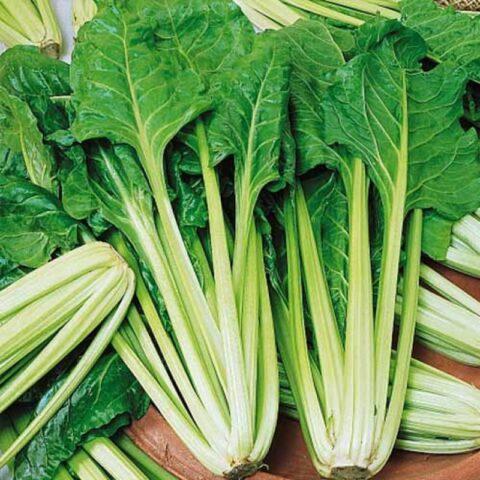
From one Izumrud chard bush you can get up to 1 kg of leaves and stems
Lucullus
The leaf beet variety ripens within 60-70 days from planting. It has not only good taste, but also high decorative value. The leaves are yellow-green, the stems have a whitish tint.
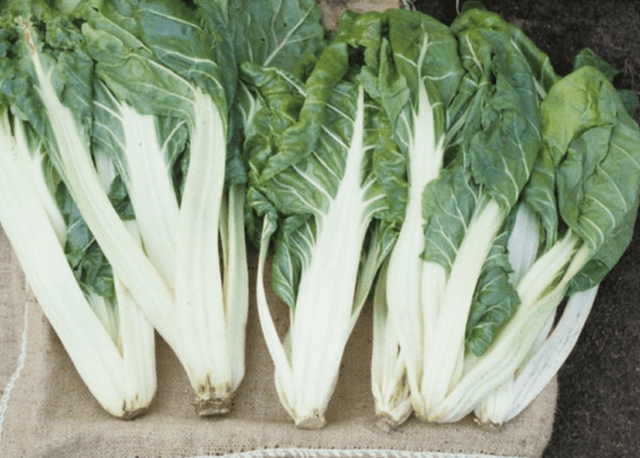
Lucullus chard can be planted throughout the season, including for the fall harvest.
Scarlet
An early hybrid variety of leaf beet produces a harvest in 40 days and reaches full ripeness in three months. It has spreading and long vesicular plates of violet-green color and red petioles.

Scarlet chard produces up to 10 kg of harvest in a greenhouse and up to 5 kg in a garden bed
Green
The late variety of chard matures in 85-120 days depending on conditions. Rises up to 60 cm above the ground. The edible plates of chard are dark green, bubbly, and collected in a semi-vertical rosette.
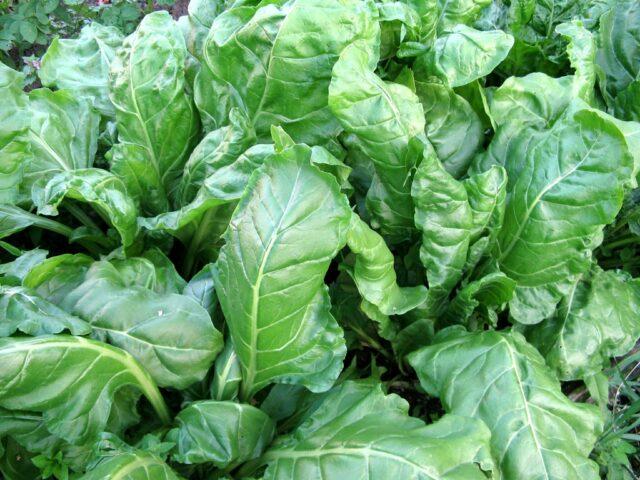
The Green variety brings 3-8 kg of harvest per meter of planting
Composition and properties
Photos of chard varieties and their descriptions arouse interest due to the beneficial properties of the plant. Swiss chard contains many valuable substances:
- vitamins A and E;
- ascorbic acid;
- manganese and potassium;
- vitamin K;
- calcium and magnesium;
- iron;
- folic acid;
- fiber.
The nutritional value of the product is about 17 calories per 100 g.
When consumed in moderation, chard strengthens the body and improves well-being. In particular, Swiss chard:
- improves digestive processes and prevents the development of constipation;
- strengthens immune resistance;
- cleanses the liver of toxins and poisons;
- eliminates heartburn and flatulence;
- protects against the development of anemia;
- strengthens blood vessels and prevents atherosclerosis;
- improves heart function;
- promotes weight loss on a diet;
- regulates blood pressure;
- improves the condition of diabetes.
Planting chard in open ground
Cold-resistant chard is designed for early harvest of greens from your own garden. You can sow the seeds of the crop directly into the ground in mid-spring. The procedure is simple, but requires attention.
When to plant chard
Typically, chard beets are sown in the soil in the spring at the beginning of May. In the southern regions, planting is allowed as early as mid-April. In the Urals and Siberia, the procedure often has to be postponed until the second ten days of May. It is necessary to focus on weather conditions - by the time the seeds are sowed, the soil should warm up to 5 °C or more.
Site selection and soil preparation
Leaf beet grows well in fertile soils with an acidity level of 6 pH.Place the chard in the garden bed in a lighted area with good drainage without stagnant moisture. The best soil for the crop is after legumes, carrots, cucumbers and tomatoes, and potatoes. But it is not recommended to plant chard in place of spinach; beets also react poorly to heavy clay soils.
Before sowing seeds, the area must be prepared. The soil is dug up to a depth of about 30 cm and fertilized with peat and compost, potassium chloride and superphosphate are added to the soil. If the soil is too heavy, it needs to be diluted with sand.
Sowing chard seeds
The procedure for planting leaf beet seeds in open ground is carried out according to the following algorithm:
- The material is soaked in warm water for two days. The liquid is changed periodically to prevent it from souring. It is useful to leave the seeds in a strengthening biosolution for two hours, which stimulates the active growth of the crop and increases its immunity.
- Shallow furrows are made in the prepared area, leaving 30-50 cm between rows.
- Planting material is laid out in recesses at intervals of 5 cm and sprinkled with soil on top with a layer of up to 4 cm.
The beds must be moistened abundantly, without eroding the furrows, and covered with film or lutrasil to create greenhouse conditions.
Sowing chard is also allowed before winter. The algorithm as a whole does not differ from the standard one, only the seeds are placed in the soil dry and the beds are not watered after planting. It is necessary to sow chard beets in already frozen soil.
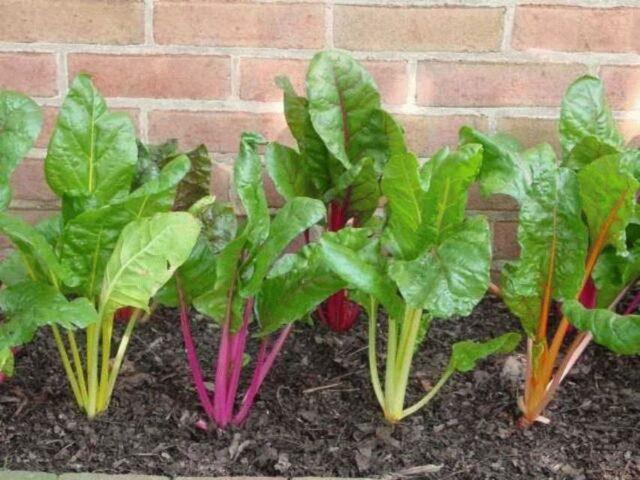
It is recommended to replant chard on the site every 3-4 years
How to grow chard seedlings from seeds
The seedling method of growing leaf beets is practiced in cold regions with short summers. The diagram looks like this:
- In late March or early April, chard seeds are soaked in water for a couple of days.
- To sow the material, prepare a substrate consisting of garden soil with the addition of peat, humus and sand, and pour it into shallow boxes.
- The seeds are planted in the soil at intervals of 2-3 cm and moistened with a sprayer.
- The container is covered with transparent film and placed in a warm place for several days.
- When seedlings emerge, the seedlings are moved to a lighted room with a temperature of about 15 °C.
It is recommended to thin out green chard sprouts, leaving 5-7 cm of space between seedlings. Transfer to open ground is carried out after about a month, when the beets acquire 2-3 true leaves.
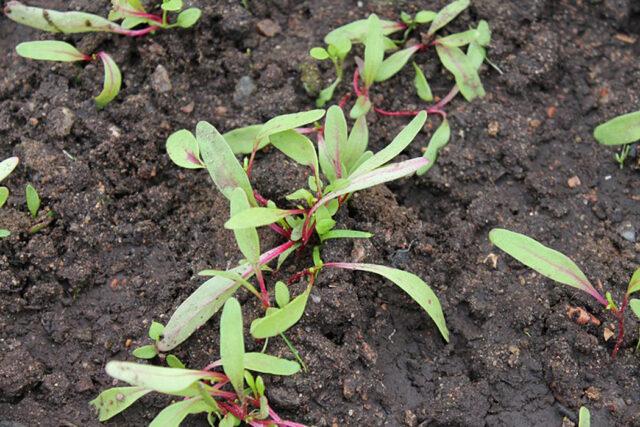
You can transplant leaf beet seedlings into the garden only after the end of return frosts.
Chard care
Chard in a greenhouse or in a garden bed does not have complex care requirements. But basic growing rules must be followed.
Watering
Swiss chard reacts painfully to a lack of moisture - during drought, its plates and petioles become tough and less juicy. In hot and sunny weather, chard needs additional watering.
Moisture is added to the plant as the soil dries. In rainy weather, watering can be neglected, otherwise the roots may rot.
Feeding
Swiss chard needs fertilizing, but it is necessary to use mainly organic matter - bird droppings and manure. During the growing season, fertilizers are applied at least twice - during thinning of seedlings and after another three weeks.If one of the late-ripening varieties of chard is planted on the site, then 3-4 weeks before harvest you can feed the plant a third time.
Mineral fertilizers for leaf beets are usually used only when preparing the soil before sowing. If applied during cultivation, chard blades and petioles may accumulate nitrates.
Protection from diseases and pests
Chard has good immunity and rarely suffers from pests and fungi. But sometimes he can be affected by:
- cercospora blight - a fungal disease that leaves gray spots with a dark border on the leaves;
Treatment of cercospora is carried out by spraying with Bordeaux mixture
- powdery mildew - you can recognize the fungus by the white coating on the underside of the plates;
In case of powdery mildew, you need to reduce watering of chard or transplant it to a drier place.
It is recommended to treat leaf beets against diseases at the seed sowing stage. During cultivation, you need to regularly remove plant debris from the beds, thin out the plantings and prevent the soil from becoming waterlogged.
As for pests, chard on the site usually causes damage:
- beet aphid - a small dark insect attacks beets in large colonies and sucks juice from the leaves;
A safe and effective remedy for aphids is an infusion of onion peels.
- slugs - gastropods eat chard foliage in rainy weather and leave large holes on the plates;
Slugs are collected manually; for prevention, the beds are mulched with rough material.
- wireworm - adult beetles and larvae feed on the underground parts of leaf beets and interfere with the development of the crop.
The wireworm begins to harm chard in May and is especially active at high humidity.
To combat pests, it is recommended to use folk remedies - a solution of laundry soap and wood ash, tobacco infusion. Much attention needs to be paid to proper agricultural technology. It is better not to spray chard with chemicals, as its leaves will become unsuitable for food.
How to grow chard on a windowsill
If you wish, you can grow chard at home on the balcony or on the windowsill. Instructions for sowing seeds look like this:
- A nutritious soil mixture of garden soil with the addition of organic matter and wood ash is placed in wide boxes or a pot about 15 cm high.
- The seeds are pre-soaked for a couple of days.
- Before planting, the soil is spilled with hot water and grooves are made up to 2 cm deep.
- Lay out the growing material in the recesses, leaving 12 cm intervals between adjacent seeds.
- Sprinkle the grooves with soil and tamp lightly.
It is necessary to keep a box or pot of beets on a lighted windowsill at a temperature of about 20 °C. Before emergence, watering is carried out every two days. After chard microgreens appear during cultivation, the frequency of moistening is reduced. You need to focus on the actual condition of the soil - if it starts to dry out, it’s time to water again.
Feed chard in a pot every two weeks. It is best to use organic matter rather than minerals - a solution of bird droppings or an infusion of wood ash. With the onset of winter, chard beets need to be moved closer to the light.
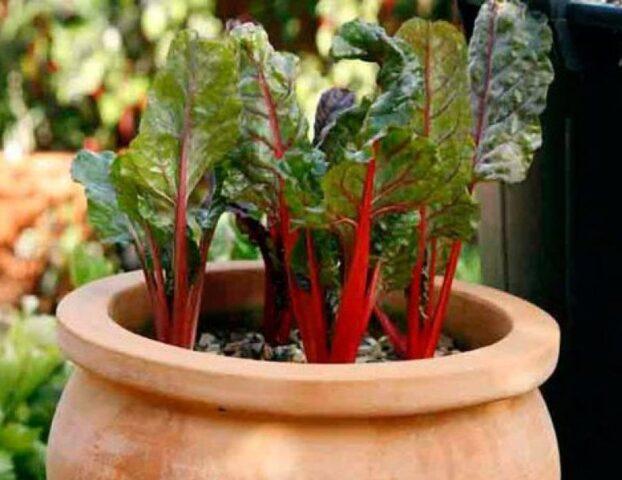
It is recommended to sow chard for home cultivation in early May.
Reproduction
Seeds are used to propagate leaf beets in the garden or at home. They can be collected from an adult plant from the second year of life. Ripe bolls are cut and hung in the air under a canopy to dry.
After the excess moisture has evaporated, the seeds are removed, poured into a paper bag and stored in a dark and dry place until sowing. The material must be used within 1-2 years.
Collection and storage
Chard leaves are usually removed 2-2.5 months after the first shoots. It is not recommended to wait too long, since old plates are less tasty and juicy than young ones. Harvesting should begin at the moment when 8-10 leaves appear on the plant.
For food purposes, choose the largest and most attractive-looking plates. It is not customary to cut them with a knife - a lot of juice flows out; it is better to twist each leaf upward by hand. Since chard grows quickly, it can be harvested several times during the season.
Beetroot should be stored in the refrigerator at 0°C. But even in such conditions, chard remains fresh for less than a week. For long-term storage, chard beets are washed, cut and placed in plastic bags, and then placed in the freezer. At negative temperatures, greens retain their valuable properties for about six months.
Conclusion
Growing chard comes down to a few simple procedures. The leaf beets on the site need to be regularly watered and fed with organic matter. The plant easily takes root in the garden and in closed containers and produces stable yields of greenery.
